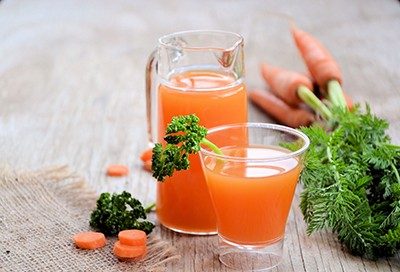FOR IMMEDIATE RELEASE
ACS News Service Weekly PressPac: January 27, 2021
Juicing technique could influence healthfulness of fresh-squeezed juice
“Untargeted Chemometrics Evaluation of the Effect of Juicing Technique on Phytochemical Profiles and Antioxidant Activities in Common Vegetables”
ACS Food Science & Technology
With the New Year, many people are making resolutions to eat healthier, by eating more vegetables, for example. But those who don’t like the taste or texture of some vegetables might prefer to drink them in a home-squeezed juice. Now, researchers reporting in ACS Food Science & Technology have found that the choice of household juicing technique can influence the phytochemical content and antioxidant activity of common vegetable juices.
Home juicing machines have become popular in recent years, with different types available. For example, blenders crush vegetables with fast, spinning blades, and the resulting juice is typically thick, with much pulp and dietary fiber. In contrast, high-speed centrifugal juicers quickly pulverize veggies and separate out pulp and fiber, making for a thinner juice. Low-speed juice extractors squeeze juice with a horizontal auger that rotates vegetables at a low speed, producing the least heat of the three methods and also removing pulp and fiber. Juicing can alter the levels of health-promoting phytochemicals and antioxidants in raw vegetables by exposing inner tissues to oxygen, light and heat and releasing enzymes. Therefore, Junyi Wang, Guddadarangavvanahally Jayaprakasha and Bhimanagouda Patil at Texas A&M University wanted to compare the phytochemical and antioxidant contents of 19 vegetables juiced with these three techniques.
After preparing juices with the different methods, the researchers observed that, in general, blending produced juices with the lowest amounts of some beneficial compounds, such as vitamin C, antioxidants and phenolics, probably because the technique produced the most heat. Low-speed juicing generated the highest amounts of beneficial compounds, although exceptions were found for certain vegetables. However, likely because of their higher fiber content, blended vegetable juices had the highest amounts of α-amylase inhibitors, which could help reduce hyperglycemia after a meal. The researchers then used mass spectrometry and chemometrics to identify and quantify 85 metabolites in juices prepared by the three methods, finding that the low-speed juicer produced more diverse metabolites than the other two methods, but the relative abundances for the three juicing methods differed based on the veggie type. Therefore, different vegetables and juicing methods could produce unique health benefits, the researchers say.
The authors acknowledge funding from the U.S. Department of Agriculture-Specialty Crop Research Initiative.
###
The American Chemical Society (ACS) is a nonprofit organization chartered by the U.S. Congress. ACS’ mission is to advance the broader chemistry enterprise and its practitioners for the benefit of Earth and all its people. The Society is a global leader in promoting excellence in science education and providing access to chemistry-related information and research through its multiple research solutions, peer-reviewed journals, scientific conferences, eBooks and weekly news periodical Chemical & Engineering News. ACS journals are among the most cited, most trusted and most read within the scientific literature; however, ACS itself does not conduct chemical research. As a leader in scientific information solutions, its CAS division partners with global innovators to accelerate breakthroughs by curating, connecting and analyzing the world’s scientific knowledge. ACS’ main offices are in Washington, D.C., and Columbus, Ohio.
To automatically receive press releases from the American Chemical Society, contact newsroom@acs.org.
Note: ACS does not conduct research, but publishes and publicizes peer-reviewed scientific studies.
Media Contact
ACS Newsroom
newsroom@acs.org


